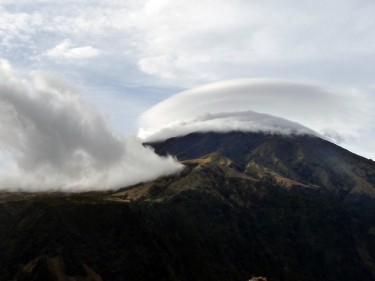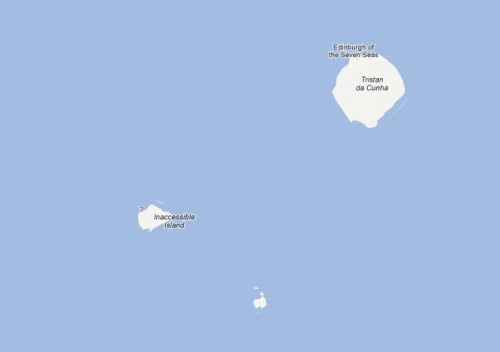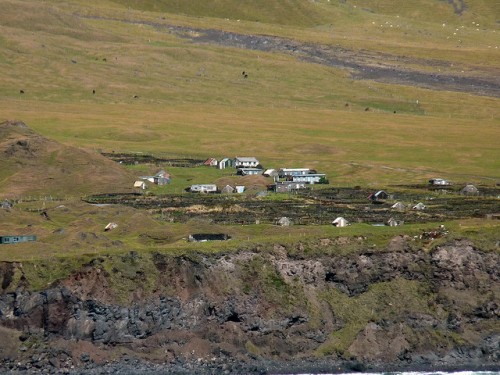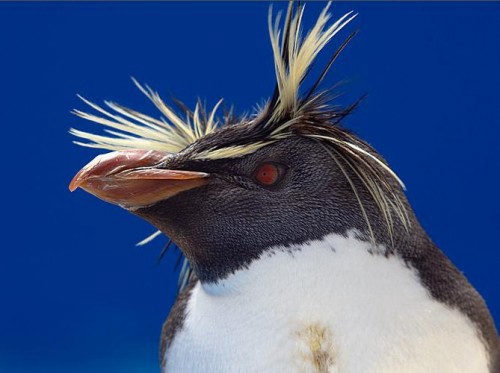To Nowhere Island! In The Middle Of The Sea
To Nowhere Island! In The Middle Of The Sea
by Sara Morrison

My dream vacation spot is an island in the middle of the Atlantic Ocean. It’s a British territory, which may have you picturing Bermuda, the Caymans or maybe Turks and Caicos. Somewhere tropical and gorgeous, surely, because that’s what island vacations are for: lying on the beach, basking in the sun, and watching other tourists fail at parasailing. But this island is not tropical and gorgeous. In fact, the skies are usually grey. There are no beaches, no parasailing, and barely any tourists to fail at it if there was. It’s called Tristan da Cunha, and it’s the most isolated inhabited place in the world. This is where I want to go, and I probably never will.
The island is roughly equidistant between South America and Africa. Its closest inhabited neighbor (1,320 miles away — about half the width of the United States) is Saint Helena, best known as the island Napoleon Bonaparte was exiled to because it was far enough away from everything else to prevent him from escaping or being rescued. Compared to Tristan’s location, Bonaparte’s final home hardly feels remote at all.
Yet 261 British citizens proudly call it their home today (it was 262 until the death of 81-year-old Lydia Green on February 8th, may she rest in peace). It’s an insular community, to say the least: they share just eight last names among them. The island is roughly 40 square miles in area, most of which is volcano. Where the volcano meets the sea, the land flattens out, leaving space for one village (Edinburgh of the Seven Seas — called “The Settlement” locally) and some farmland.
There’s no airport and no harbor either — not since the lava flow from a volcanic eruption in 1961 destroyed it. Tristan’s only accessible through a port, which is used by fishing vessels and boats that ferry back and forth to the few large ships that pass by the island every year, delivering supplies and mail. Sometimes they also bring people.

The chance that I will ever be one of those people is pretty slim. It’s a 1,750-mile voyage from Cape Town that takes at least six days each way and isn’t cheap. When the ship finally arrives in Tristan’s waters, there’s no guarantee the water will be calm enough to take a smaller boat to the island. There’s also no guarantee I’d be allowed on it. Special permission must be obtained from the 11-member Island Council, who require a background check and proof of health insurance.
I should be able to pass those tests, but then they’d want to know the reason for my visit. This presents a problem, as I don’t really have an answer. The island isn’t particularly beautiful, the weather isn’t especially nice, and, aside from studying the island’s native Northern Rockhopper penguin population (in which I have little interest despite their bold spiky feather hairdos), there doesn’t appear to be much to do there.
They do have telephones, television and the Internet, which has been especially useful for my research. Tina Glass answers emails sent to Tristan’s “general enquiries” address on its official website. She writes that most of the islanders are employed by the government or the fish factory, and they spend their non-work hours tending to livestock and communally-owned potato plots. The island has a school, a post office, a museum, a coffee shop, two churches (one Catholic, one Anglican), a supermarket, and a tourism center that can’t possibly be very busy. A health facility provides free care to residents, many of whom suffer from the same genetic diseases the incestuous nature of a remote island and a small population breeds. There’s Prince Phillip Hall, home to the Albatross Bar and the “social heart of the village,” according to the website. All told, I think these places could keep me busy for three hours, maximum. Maybe another five hours if the Albatross Bar is well stocked.


I think what fascinates me, then, is the people of Tristan, not the island itself. What must it be like to spend your whole life in the same place with the same people, surrounded by thousands of miles of uninterrupted, unforgiving ocean? Since 1816, when William Glass arrived on the island with his wife and children, this community has steadily developed its own culture and dialect. Some residents have never left the island: What must those people be like? What do they sound like? What do they think of us? What do they do on the weekends? What do they wear? Who cuts their hair? It’s probably just one person who can’t have been trained properly. I bet they all have bad hair, just like those Northern Rockhopper penguins. What could we possibly have to talk about? Some of them have never seen a stoplight, or tasted McDonald’s, or stepped inside a building more than two stories high.
Tina Glass has. She’s been to South Africa and France, and lived in the United Kingdom for a year. She comes across as perfectly (and, I must admit, somewhat disappointingly) normal in her emails, writing “I found it all fascinating and very different from our environment.” As different from me as these people may seem, at least one of them views my world the same way I view hers.
“On the island we have no crime and do not have to lock doors. We are a small community and where everyone knows each other,” Glass writes. I come from a small town in Connecticut that sounds very similar and often felt just as remote. I hated it and couldn’t wait to leave. And yet I’d be willing to endure weeks of travel and spend thousands of dollars to go to a community that is even smaller and weirder… in the middle of the ocean, next to nowhere.
Sara Morrison once lived in Los Angeles and played roller derby. Now she goes to graduate school in New York and thinks about roller derby. Top two photos by Michael Clarke; penguin photo by su neko.
